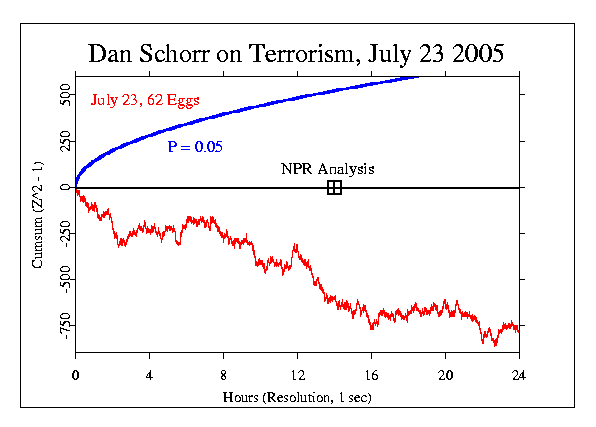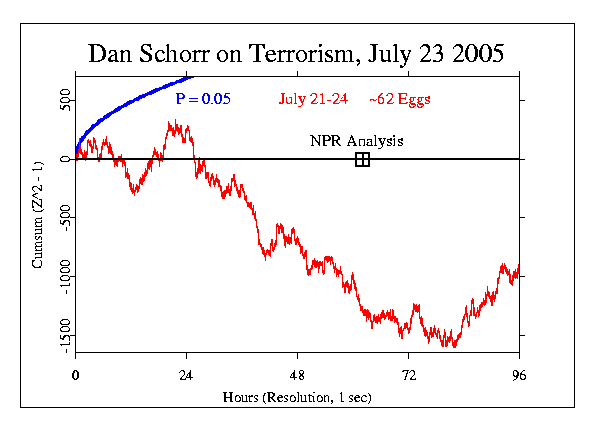|
I am a fan of Daniel Schorr, who is one of the most respected news
commentators on public radio. I listen whenever he's on because his
knowledge is deep and his perspectives worth hearing. Mostly what he
speaks about is topical, but usually there is a broader philosophical
tone in his reporting.
On July 23 2005, in his analysis segment on NPR's Morning Edition,
Saturday, he said "we will remember this day" as one in
which terrorism in various guises took full possession of the news. The
front page of the New York Times, he said, had only stories about
terrorism in the prime space "above the fold."
Three car bombs devastated the Red Sea resort Sharm el-Sheikh in Egypt
early Saturday; a man was shot dead by police guarding London transit
(doubly tragic because he was an innocent tourist);
random searches of packages become the norm in NYC transit; and there
were four pictures of terror suspects in London.
I made note of his observations, resolving to take a look
at the GCP's output that day.
Here is the figure, which shows an unrelenting trend during the day,
with a slope that would be highly significant in a formal test.

The steep slope of the data on the 23rd was such that I did some
checking to ensure there were no "rotten eggs" included in the data.
When that was clear, I decided to look at surrounding days. The result
is a striking picture. There is a period of two full days, July 22 and
23, with the same strong slope. It stands out clearly in the context of
the surrounding days.
Whether it is meaningful in the scientific sense cannot be determined
via post hoc analysis, but certainly the appearance is consonant with
Dan Schorr's news analysis. It is a troubling time in the world.

|